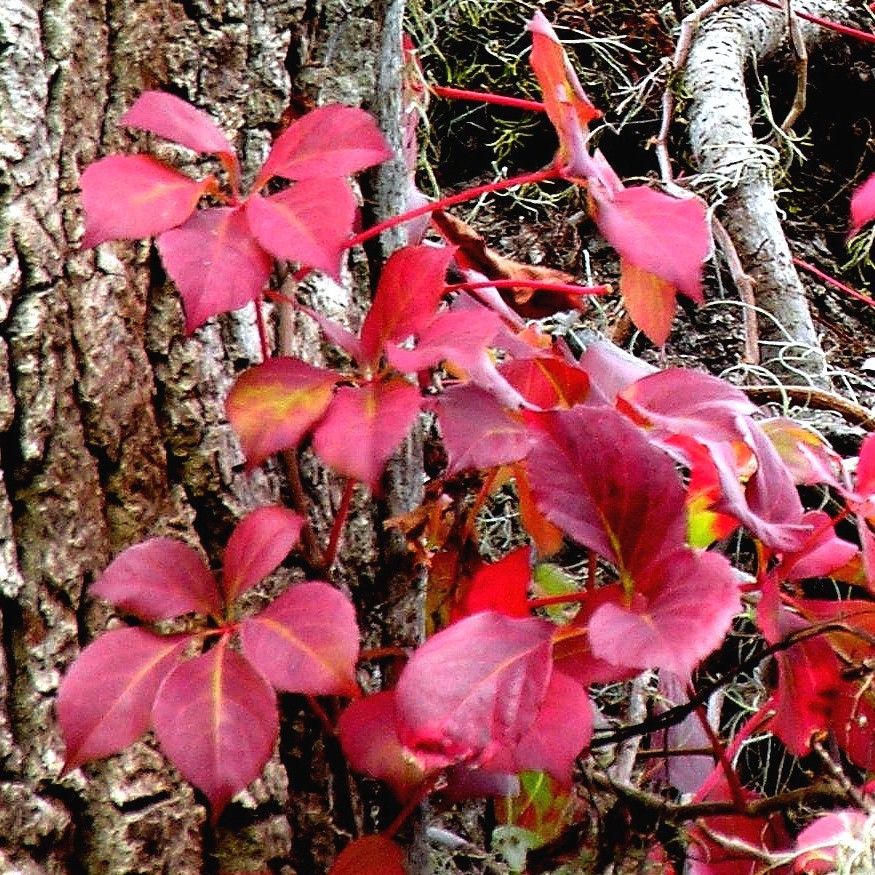FNPS Plant Database
Parthenocissus quinquefolia
Nomenclature
Common Name:
Synonym(s):
Genus species:
Family:
Vitaceae
Plant Specifics
Form:
Size:
Life Span:
Long-lived perennial
Flower Color:
Fruit Color:
Phenology:
Noted For:
Landscaping
Recommended Uses:
Considerations:
Availability:
Propagation:
Light:
Moisture Tolerance:
Always Flooded---------------------------------Extremely Dry
□□□□□□□□□□□□□□□■■■■■■■■■■■■■■■■■■■■■□□□□□□
Usually moist, occasional inundation -to- Somewhat long very dry periods
Salt Water Flooding Tolerance:
Unknown
Salt Spray/Salty Soil Tolerance:
Moderate. Tolerant of salty wind and may get some salt spray.
Soil or Other Substrate:
Sand, Clay, Loam
Soil pH:
Suitable to Grow In:
8A,8B,9A,9B,10A,10B,11

USDA zones are based on the average annual extreme minimum winter temperature.
Don't know your zone? Click here to search by zip code.
Ecology
Wildlife:
Pollinated by bees and other pollinators. Bees documented visiting this species include Colletes nudus, Augochloropsis metallica, Megachile mendica , and Apis mellifera (honeybee) (Deyrup et al. 2002).
Larval host for some sphynx moths.
Fruits eaten by a variety of birds and small mammals. Also used for shelter.
Native Habitats:
Natural Range in Florida:
Visit the USF Libraries Atlas of Florida Plants
Comments:
Ethnobotany:
General Comments:
Citations:
Burnham,R J. 2003. Climbers. University of Michigan. https://climbers.lsa.umich.edu/?p=478.
Deyrup, Mark; Jayanthi Edirisinghe, and Beth Norden. 2002. The diversity and floral hosts of bees at the
Archbold Biological Station, Florida (Hymenoptera: Apoidea). Insecta Mundi. 544. https://digitalcommons.unl.edu/cgi/viewcontent.cgi?article=1543&context=insectamundi
Haehle, Robert G. and Joan Brookwell. 1999. Native Florida Plants. Gulf Publishing Company. Houston, TX.
Missouri Botanical Garden. 2021. https://www.missouribotanicalgarden.org/PlantFinder/PlantFinderDetails.aspx?kempercode=l490
Wunderlin, R.P., 1998, Guide to the Vascular Plants of Florida: University Press of Florida, Gainesville, Florida, 513 p.
Wunderlin, R. P., B. F. Hansen, A. R. Franck, and F. B. Essig. 2021. Atlas of Florida Plants ( http://florida.plantatlas.usf.edu/ ). Institute for Systematic Botany, University of South Florida, Tampa.










